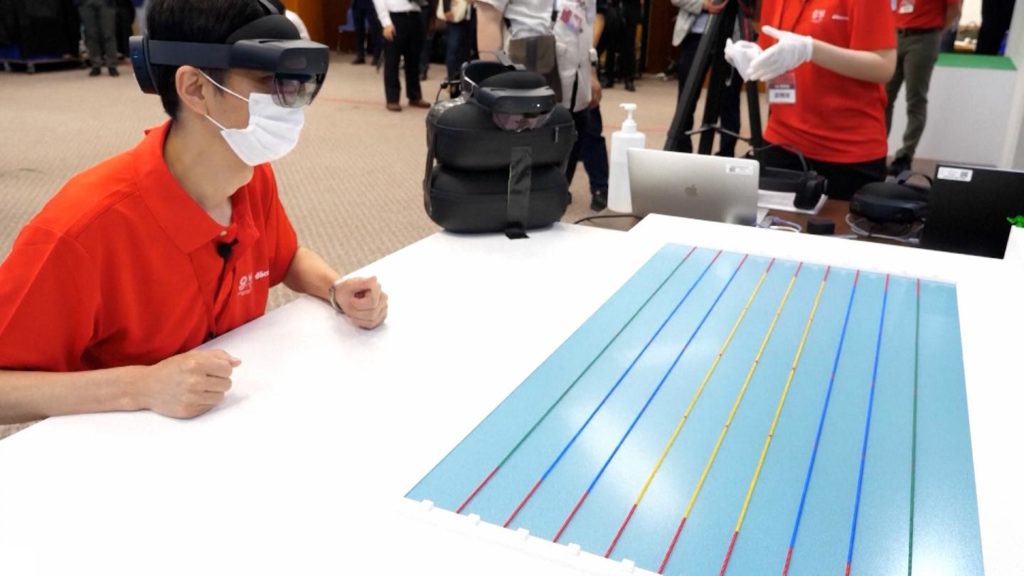Using advanced virtual reality (VR) and augmented reality (AR), this year’s event will be the first Games with its own COVID-inspired Olympic Virtual Series.
In one event, pro cyclists competed from around the world on exercise bikes from the comfort of their own homes. On-site at the Games, a team from NTT Docomo, one of Japan’s major network providers, is helping spectators get an upgraded experience.

“At a normal swimming event, spectators are very much engrossed in the action, but if you want to check out player records or other stats, you have to look up at a display on a wall,” said Noriyuki Furuno who is leading the NTT Docomo team.
Going back and forth between the pool and the display, as would be the case during a normal swimming competition, is now a thing of the past. Thanks to the new speed and low latency that 5G offers, spectators at swimming venues can wear a special augmented reality or AR headset.

While keeping their eyes on the action, they can see who is in what lane, lap times and if a swimmer is close to breaking a world record.
These in-person experiences depend on cutting-edge transmission technology end-to-end. That will take some work, but Docomo’s experience designer Akiji Tanaka said there are interesting applications ahead.
“In the future, we could send competition data directly to another pool set up in another location – replicating the swimmers in the pool and all the data that comes with it via those glasses and casting it over the empty pool,” said Tanaka.
“I think spectators will be able to watch and participate in sports happening very far away without being bound by their physical location”.
According to Euronews.next














